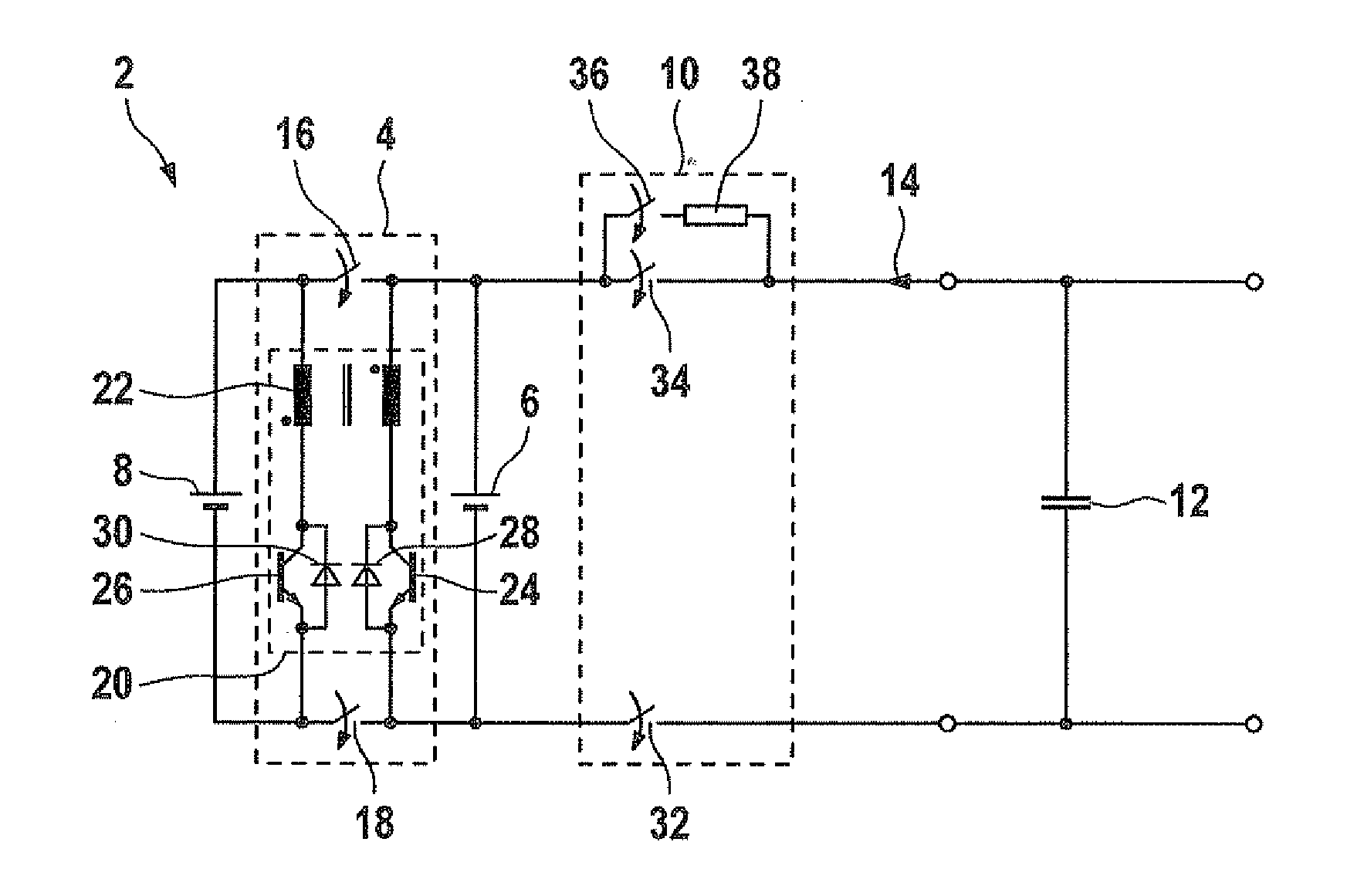Parallel Circuit of Accumulator Lines
a parallel circuit and accumulator technology, applied in the direction of electric vehicles, battery/fuel cell control arrangements, transportation and packaging, etc., can solve the problems of failure of the entire system, car breakdown, safety problems, etc., and achieve the effect of reducing the cost and electric loss of the accumulator
- Summary
- Abstract
- Description
- Claims
- Application Information
AI Technical Summary
Benefits of technology
Problems solved by technology
Method used
Image
Examples
Embodiment Construction
[0024]Specific embodiments of the present invention are described in detail below with reference to the figures.
[0025]FIG. 1 shows a schematic circuit diagram of an accumulator 2 with an exemplary embodiment of a circuit 4 according to the present invention.
[0026]In accumulator 2, a first accumulator line 6 is connected in parallel to a second accumulator line 8 via circuit 4 according to the present invention. Furthermore, a DC link capacitor 12 as the electrical consumer having an input capacitance is connected in parallel to first accumulator line 6 via a protective circuit 10. Thus, an electric current 14 may be charged and discharged by accumulator 2 via DC link capacitor 12.
[0027]Circuit 4 according to the present invention has a first switch 16 and a second switch 18 in order to disconnect and connect the parallel connection between the two accumulator lines 6, 8. For the two accumulator lines 6, 8 to have a uniform voltage level in a separated state, a bidirectional switchin...
PUM
 Login to View More
Login to View More Abstract
Description
Claims
Application Information
 Login to View More
Login to View More - R&D
- Intellectual Property
- Life Sciences
- Materials
- Tech Scout
- Unparalleled Data Quality
- Higher Quality Content
- 60% Fewer Hallucinations
Browse by: Latest US Patents, China's latest patents, Technical Efficacy Thesaurus, Application Domain, Technology Topic, Popular Technical Reports.
© 2025 PatSnap. All rights reserved.Legal|Privacy policy|Modern Slavery Act Transparency Statement|Sitemap|About US| Contact US: help@patsnap.com


